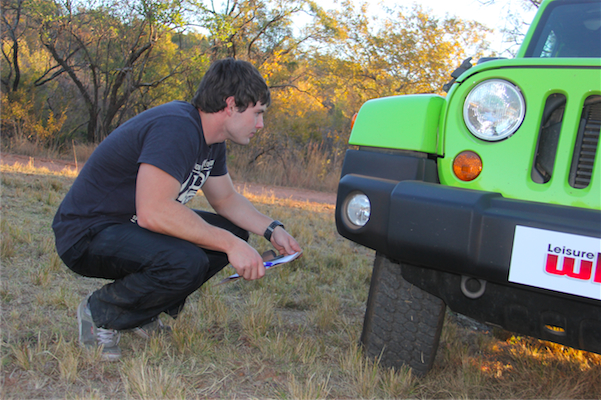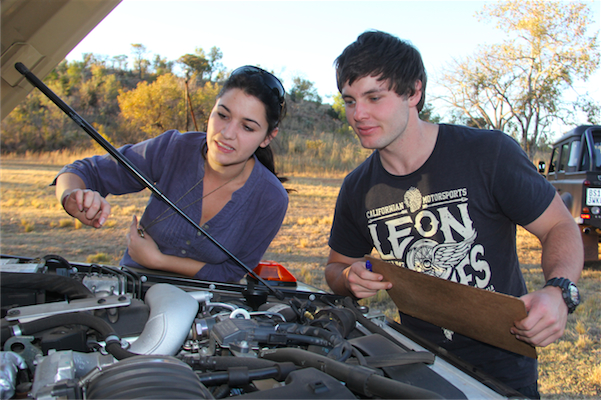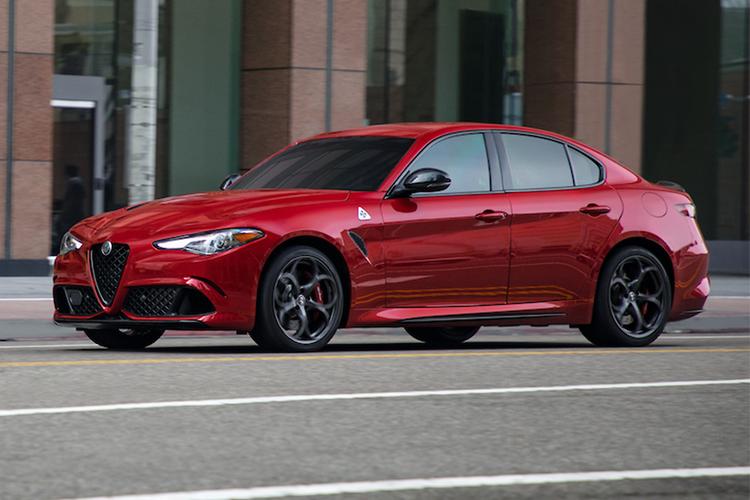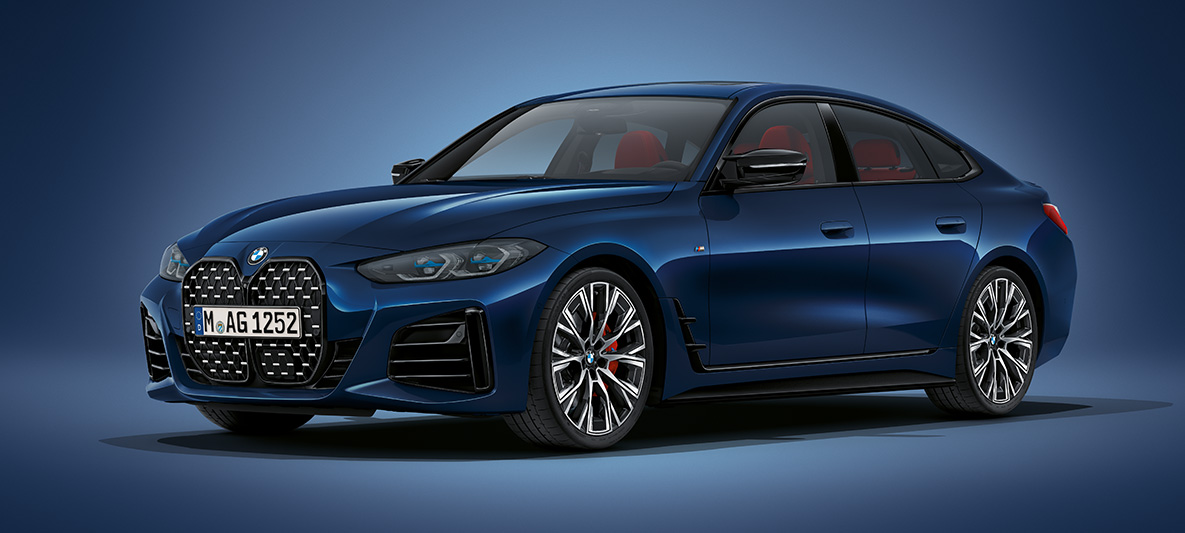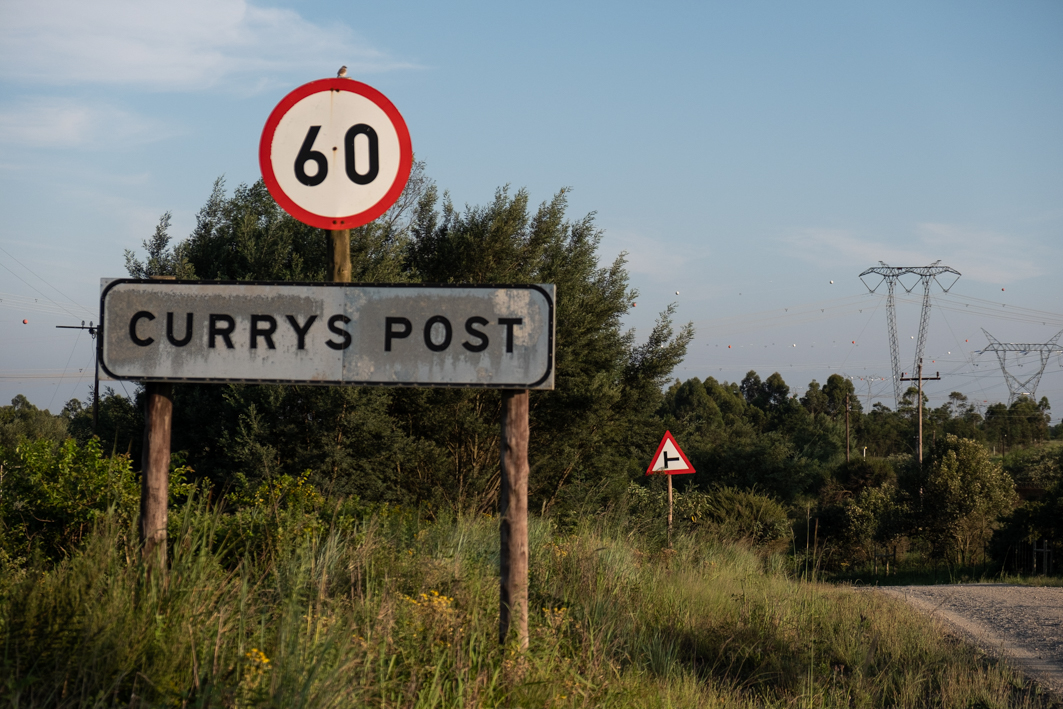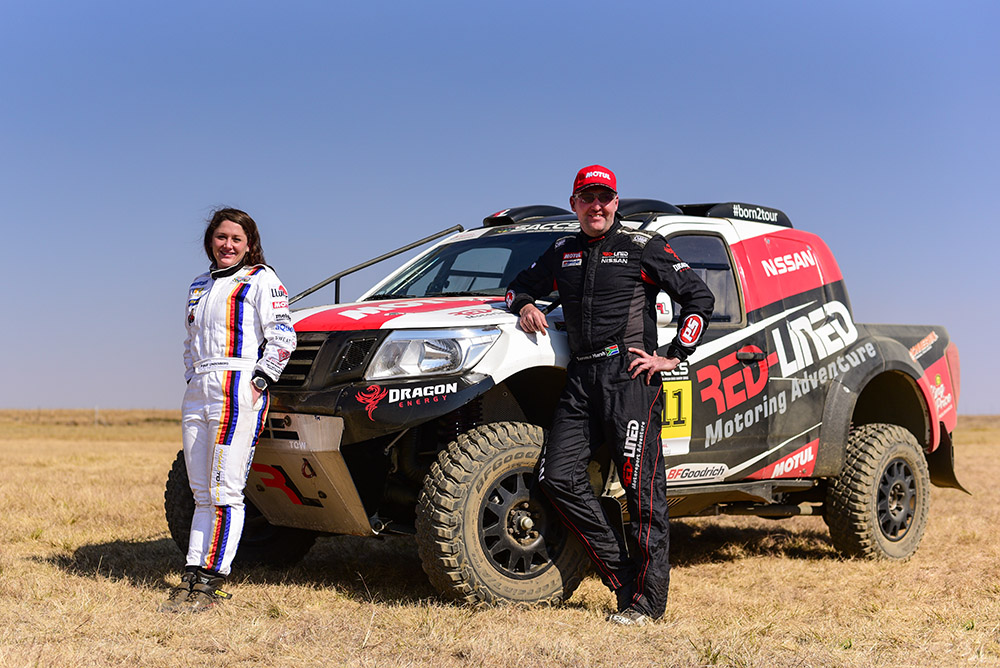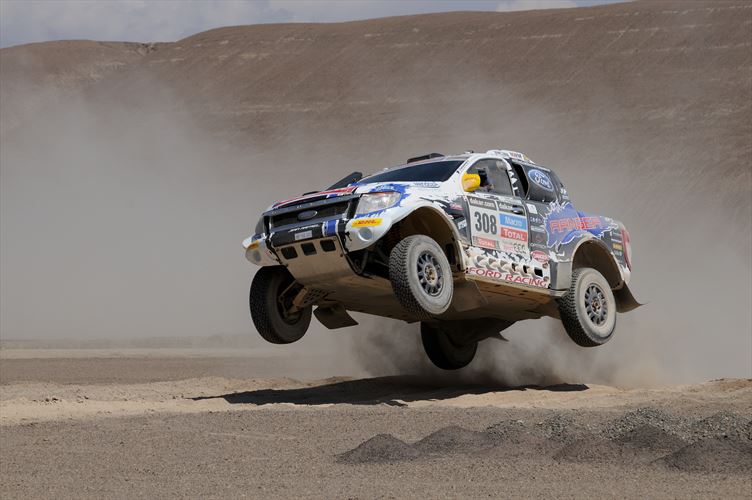During the month of June, the Leisure Wheels team was joined by the SAGMJ Bursar student. With a strong writing background and sound motoring knowledge, our intern was relatively new to the world of off-roading. We threw him into the deep end, and these are his thoughts on a month in off-roaders.
By Sean Nurse
I have to admit, when the idea of spending a month in off-road vehicles first entered my mind, I was perturbed. Although I consider myself a fanatic who finds beauty in all things motoring, I was still of the thought that the closer your bum is to the ground when driving a vehicle, the better.
My first Chinese: Foton Tunland
When it came to my first test vehicle I honestly didn’t know what to expect. I was told that I would be testing Foton’s Tunland. While I realise that the Chinese vehicle contingent is evolving at an astonishing rate, I had never actually driven a Chinese product. Naturally, a bit of scepticism had crept in by the time the car was dropped off. The first thing I noticed was a massive Cummins logo on the door of the vehicle “Oh great, it has a truck engine” I said. I then fired it up. “Oh great, it really does have a truck engine” I thought. Then I went for a drive.
What an engine – bucket of torque and barely a sign of lag. It feels stronger than the 120 kW and 360 Nm figures suggest. My ignorance was quickly put to bed when I found out that the ISF 2, 8-litre engine that would be powering me around for the next week is the first time that Cummins has chosen to foray in to the passenger vehicle market. I was driving a pioneer to some extent.
When I had gotten over the deeply impressive power plant I started to analyse the Tunland as I would any other test vehicle. While the engine is impressive, there is an industrious wail around the cabin while you drive, it isn’t unbearable but you know that you are in a bakkie. The Getrag gearbox, with its immensely long lever, still manages to provide accurate enough shifts, although going into third gear can be tricky at times. The ride quality was not as supple as I had initially thought. It felt unsettled to me; the vehicle gives the illusion that it is floating. Not to be mistaken for wafting, floating in this instance means vague and bouncy.
When it comes to the tangible quality of the Tunland cabin, I see nothing worse material- and quality wise than you would find in most vehicles of this type. I have heard people say that the styling is “…very Toyota Hilux” and my reaction is always “so what?’” The Hilux is the best-selling vehicle in the country, and a handsome brute to match. That is like criticising someone because they look too much like Hugh Jackman.
The standard features list as with many Chinese vehicles is impressive: electric windows all-round, ABS with EBD, two airbags a radio with USB and AUX compatibility, airconditioning and electric mirrors. The model that I had on test was the 2, 8 4×2 Luxury. While I understand the need for four-wheel-drive, the R90 000 premium that it commands over the 4×2 not only puts the Tunland in a similar price bracket as its more established competitors but also takes away its trump card: its price. I believe that if Foton add a lockable rear differential and traction control, then the 4×4 model would become a viable option. As it stands, the 4×2 is the pick of the range for me. My test unit was priced at R269 950, which for a fully equipped double-cab bakkie is great value.
Driving a legend: Toyota Land Cruiser V6
In-between my first and second test unit I had the pleasure of piloting a legend: the Toyota Land Cruiser Double Cab V6 petrol. This was my first Land Cruiser driving experience and it became immediately clear why the Cruiser has earned its iconic status. It has so much character, every time I looked at our test unit in the parking lot, I couldn’t help but smile. I wasn’t surprised when the Cruiser destroyed the off-road course we presented it with. It features both front and rear locking differentials, a beefy V6 and a track record as long as it is illustrious. What I didn’t expect was the touch-screen infotainment system. I mean, this isn’t the kind of vehicle one expect to find this in – watching your iPhone play music and charging in a Land Cruiser is something I had to adapt to. The biggest surprise of all for me, however, was how smooth the vehicle is on the open road; the V6 (whose thirst requires shares in an oil refinery) is a beautiful engine and transforms the vehicle in to a road cruiser too.
Chinese take-two: GWM Steed 5
Week two of my month in off-road vehicles presented me with another Chinese bakkie, this time the GWM Steed 5. Now, I have heard and read a few things about the Steed before, so I had a rough idea of what to expect. The model I had on test was the 2-litre VGT 4×2 Lux, the perfect vehicle to compare to the Tunland. The one thing that I discovered while driving the Steed around is how judgemental people can be about a relatively new brand. When I arrived home my friends and family were immediately negative about the car for no reason. They hadn’t driven it and don’t even know what it is. It goes to show how important brand perception is. My personal experience of the Steed is overall, very positive. While it may be smaller than the Tunland, that makes it easier to park and manoeuvre in the urban environment. The drive itself is more car-like than in the Foton, the gearbox is the best I am yet to sample in a Chinese product – very smooth and precise for a vehicle of its kind.
The design is something that seems to polarise opinion. I personally think that it is a decent looking thing, one of the more original design from a Chinese manufacturer. I am not wild about the chrome accents on the door mirrors or on the door handles, though. The interior is where I think the Steed loses ground to the Tunland; while everything feels well put together and there isn’t a rattle to be heard the choice of materials and the overall look in the cabin is dated and in need of a refresh.
My test unit was equipped with the 2-litre VGT 4D20 diesel engine, which is important for GWM, as this motor was produced in-house and I have to commend them for it. While you do find yourself working through the gearbox to get going, I found it decent when on the move with a good torque spread between 2000-4000 r/min. There is a noticeable amount of lag below that figure, which can be frustrating when pulling out from a junction where a quick squirt of power is required. The fuel returns were impressive, for a vehicle weighing almost 1800kg and powered by a relatively small motor, the returns of just over 8 l/100km were great.
I was not sure of what to make of the ride. While on the move the car feels solid and well damped, but when you approach a speed hump or encounter one our country’s famous potholes, then the ride feels hard. Any fault I could find with the Steed was almost automatically wiped away when I noticed the price versus the level of specification you receive. My test unit is priced at R239 900 , which includes features like ABS with EBD, leather upholstery, front and passenger airbags and steering mounted controls for the audio system which also features USB functionality.
I recently sampled GWM’s H5 SUV 4×2 with the same 2-litre diesel motor and I found that the gearbox was not as crisp yet the ride was better than the 4×2 Steed. The H5 equivalent is some R20 000 more than the 4×2 Steed, which leads me to the conclusion that I would rather buy the Steed 4×4.
The 4×4 Steed has genuine off-road ability and a low-range transfer box along with the practical loading bay a bakkie offers. That is R264 900 for a 4×4 double cab bakkie with all of the features you need (bar traction/stability control), which it has to be said is immense value for money. I would genuinely advise people to start changing their perceptions about Chinese vehicles – they are only getting better.
The trio
In between my second and third test unit I had the privilege of driving three more legends (are you seeing a pattern here?) when we took to the North West for the Leisure Wheels group test, something the magazine is famous for. Two days before the “shootout” I felt like a kid in a candy store as vehicles started arriving every hour or so.
First to arrive was the mighty Land Rover Defender in 110 Crew Cab guise. It has been wrapped in matte black, with the only remnants of its silver paint visible on the inside of the doors and petrol cap.
Step inside and it’s the same old Defender, apart from a few mod cons like Recaro bucket seats and air-conditioning. It is still as cramped as a Russian prison on the driver’s side and the gearbox and clutch are insanely heavy in stop/start situations. Taking the Landy off-road just feels right, the car inspires confidence and when in low range you can leave it in first gear and it will traverse most obstacles using the superb compression from the 2, 2-litre Ford-derived motor. As was expected of the Defender, it performed well off-road, but the real surprise for me was how refined it was cruising at 120 km/h on the freeway. I have heard (before driving a Defender) that anything over 110 km/h is a noisy, vibration-filled affair, but 120 km/h seemed very easy for our test unit. The new engine has seemingly transformed the Defender in to a more realistic ownership proposition.
Next up I stepped in to an icon that is so rugged that some militaries still use it today, the Mercedes-Benz G-Class 300 CDI Professional. While I have seen a few Geländewagen’s cruising the streets of some of South Africa’s most affluent suburbs they did not resemble the vehicle that we received. I stepped inside to find no radio or any modern conveniences, even the roof-liner looked as if it was paying homage to an era far groovier than the one in which we currently live.
The exterior colour was pure military and made me think that, while Mercedes-Benz make uber-luxurious vehicles and even trucks, the G-Class really epitomises the brand. You get the insane G63 AMG which is fast, luxurious and ludicrously expensive, the G500 which is a big, torquey cruiser, and the G 350 BlueTec which is for those looking to maintain a certain image while saving at the pumps. Finally, the G300 CDI Professional, the rugged, reliable military vehicle which is a status symbol albeit a very capable one.
Driving it around, it felt quite cumbersome and big, which – at nearly three tonnes – it should. The engine is thoroughly modern and is equipped with a conventional automatic gearbox, which would probably allow you to live with the G-Class every day. Off-road the G-Wagen is an old master, with front and rear locking diffs, superb ground clearance and good all-round visibility ensuring effortless performance. Overall the G300 Professional was slightly too hard core and expensive. But, while they say you should never drive one of your heroes, I can say I have and I wasn’t disappointed.
The final hero I encountered is definitely the most modern of the trio – the Jeep Wrangler Unlimited Sahara 2, 8 CRD. Our test vehicle was probably as green as anything could ever get. Even the Hulk’s alter-ego Bruce Banner called and complained. I have never been a fan of the Wrangler; I thought that it was leisure vehicle fronting as a capable off-roader. I can happily report that after spending time with the Wrangler that I am happy to eat my piece of humble pie. The Sahara proved to be the most capable vehicle of all during testing. Its automatic gearbox and uncanny ability to climb or descend almost anything makes taking it off-road an effortless affair. On the road I preferred the Jeep too. While the engine is slightly lacklustre and a bit on the thirsty side, it definitely soothes the driver in a way that the other two can’t. Overall, I picked it as my winner in the off-road shootout, I realise that the resale value cannot match that of the Defender or G-Wagen, but as an overall proposition it is very impressive indeed.
Ending in an Amarok
Moving away from the older heroes towards a newer hero, the final week of my month in off-road vehicles was spent in Volkswagen’s Amarok. The model I has on test was the 2, 0 TDI DC Trendline 4Motion. You can now buy an Amarok with a single turbo diesel engine which should satisfy the naysayers who claim that the twin turbo 2-litre cannot be as reliable as an engine with a larger displacement and a single turbo. While not the most powerful Double Cab on sale, I was never found wanting for power, the 103 kW and 340 Nm in my opinion are ample even when the vehicle is fully loaded.
Interior wise the Amarok is typically well put together and ergonomically sound as are all of the products the Volkswagen group are churning out these days. I did find the luck if an AUX or USB port alarming in a vehicle that costs over R400 000 particularly in a Double Cab which is normally more Leisure orientated. Driving the Amarok around the difference between the Chinese manufactures and the well-established industry players is evident. Volkswagen has made the ride and sound insulating inside their bakkie truly amazing. The ride is soft yet not in way that makes the steering feel vague and the diesel engine is just audible enough to remind you that you are in fact in your bakkie and not a Touareg.
The claimed fuel consumption is 7, 7 L/100 km, I believe that that is a realistic figure as in my week with the Amarok I completed what I believe to be a mixed cycle where my returns were a shade over 8 l/100 km. I have always been a fan of the Amarok, I mean what’s not to like. It is named after a lone wolf from Inuit mythology that would eat anyone who dared hunt alone at night. Apart from that I think that VW were brave to take on the established players in the market and in some instances beat them at their own game.
I was of the opinion that the Ford Ranger particularly in 3, 2 DC TDCi XLT 4×4 AT guise was the best Double Cab bakkie on the market. But since the introduction the sumptuous ZF 8-speed automatic to the Amarok range I think things may have just swung in to VW’s favour. It is difficult to write a review about the recent Volkswagen Group products, they may seem very vanilla but vanilla sells and vanilla could make them the biggest car manufacturer in the world by 2020, believe it.
So ends my month in off-road vehicles and what a transformative journey it has been, I can officially say that I have a new found respect for these machines. The popularity of SUV’s is something I can come to terms with now even if I still don’t see what’s wrong with a station wagon. That being said I’m still young and I can’t see myself being taken from my hot hatches and coupés any time soon.
Sean Nurse

